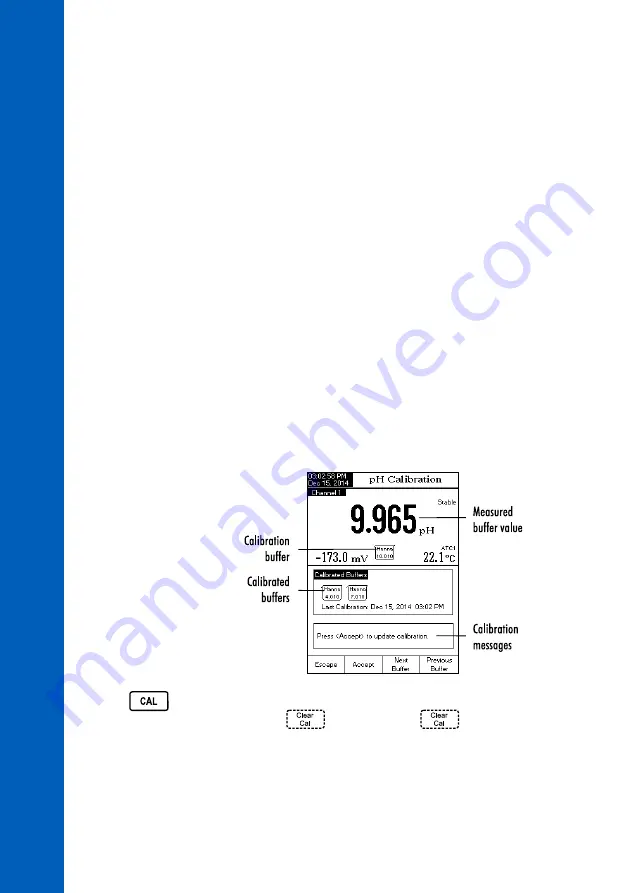
46
If you are measuring in the acidic range, use pH 7.01 or 6.86 as first buffer and pH 4.01, 3.00
or 1.68 as second buffer. If you are measuring in the alkaline range, use pH 7.01 or 6.86 as first
buffer and pH 10.01/9.18 or 12.45 as second buffer.
For extended range measurements (acidic and alkaline), perform a five points calibration by selecting
five of the available buffers.
pH CALIBRA
TION
CALIBRATION PROCEDURE
There are 8 standard pH buffers that are temperature-compensated during pH calibrations:
pH 1.68, 3.00, 4.01, 6.86, 7.01, 9.18, 10.01 and 12.45. The standard pH buffers are temperature
compensated during calibration. Custom buffers require the user to use the actual buffer value at
the temperature of use.
A minimum of a two point calibration using the standard pH buffers is required to determine the
pH electrode condition. The buffers should bracket the sample measurement pH.
An extended pH measurement range will require calibration at multiple points. The meter is able
of calibration with 5 pH buffers. For improved measurement accuracy, perform a multiple buffer
calibration bracketing and including the pH range the sample measurements.
The buffer group that will be available during calibration was set in pH setup
→
Calibration Buffer
Entry Type. The following example demonstrates pH electrode calibration if Manual selection was
selected. In this case all of the 8 standard buffers will be available for calibration.
pH Calibration screen description
• Press
. If the instrument was calibrated before and calibration was not cleared, the old
calibration can be cleared by pressing
. After 10 seconds,
will no longer be
available.
Note: It is very important to clear calibration history when a new electrode is used because
most errors and warning messages that appear during calibration depend on calibration
history.
















































